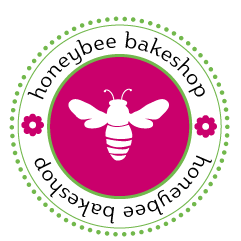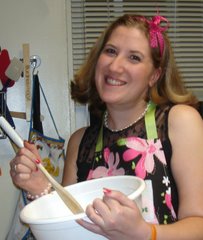This article from a recent copy of Wired Magazine pretty much justifies my desire to create my own baked goods to serve and enjoy. With the exception of some Crisco (”don’t ask, don’t tell”) I can recognize all of the ingredients that go into my cakes and cookies. And using my superpower (denial) I can “cancel out” the crisco with organic vanilla and eggs, right? Not so much for these shelf-stable snacks. (Click title for original link.)
What’s Inside: Don’t Let the Algae Sour You on Hostess’s Lemon Pie
By Patrick di Justo * 03.24.08 * Wired Magazine
Agar
Remember back in high school biology class, when you cultured bacteria on an agar medium in petri dishes? This is the same stuff. It’s actually a gelatinous preparation of the cell walls of red algae, used to thicken the fruit filling. On ingredient labels, it’s sometimes called red seaweed, likely because the idea of ingesting seaweed is somewhat palatable (think sushi). Eating red algae, on the other hand, sounds nasty.
Modified Cornstarch
When liquids are added to regular cornstarch, it turns into a thick, cloudy gel. Modified cornstarch becomes a clear mucus-like gel, excellent for filling fruit pies. What’s the difference? Instead of stretching out in a chain, modified cornstarch molecules cross-link to one another. That way, they swell with water just like regular starch but don’t break down and become opaque. The FDA-approved chemicals for modifying cornstarch include hydrochloric and sulfuric acids, hydrogen peroxide, chlorine, and sodium chloride.
High-Fructose Corn Syrup, Corn Syrup, Sugar
It wouldn’t be a proper snack food if it didn’t have three types of sugar, would it? In fact, more than one-third of the total weight of a Lemon Fruit Pie comes from this trio of sweeteners.
Vegetable and/or Animal Shortening
You can’t produce light, flaky, delicate crusts in industrial quantities with butter (the water in it can make pastry tough and chewy). Which type of shortening is used in these pies depends on the state of the commodities market. Your scrumptious treat could be made with soybean oil, but if the price is right, nothing goes better with the zesty taste of lemon than … beef fat. Yup, your fruit pie might be fluffed with ol’ Bessy’s blubber.
Lemon Puree
Finally, some fruit. According to the label, only 6 percent or less of this lemon fruit pie can be traced to lemons.
Enriched Wheat Flour The ingredient that gave us the phrase “white-bread America.” The first standards for enriching bread were set by the US in 1941, requiring the addition of iron and the B vitamins thiamine, riboflavin, and niacin (and later folic acid) to white wheat flour. These days, of course, white flour is considered unhealthy — so it’s perfect for junktastic foods like fruit pies.
Locust Bean Gum
An extract of the seeds of the carob tree, locust bean gum was known to the ancient Egyptians, who used it to bind the wrappings of mummies. Here it keeps the crust from getting soggy and letting the fruity goodness leak out.
Calcium Sulphate
Plaster of Paris. Used for millennia to congeal soy milk into tofu, this gunk has hundreds of applications. In a fruit pie, it may be present as a coagulant, a gel extender (helping to hold the moisture in), or just to add calcium.
Artificial Flavor Hostess won’t say what it uses. But most citrus flavors can be derived from naturally occurring terpenes, plant-based hydrocarbons that can be replicated easily in the lab by distilling the mother lode of terpenes: turpentine.










0 Responses
Stay in touch with the conversation, subscribe to the RSS feed for comments on this post.